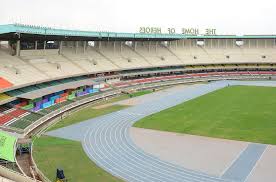Kenya’s passion for football is undeniable. From dusty village matches to the roars of Kasarani stadium, the beautiful game penetrates through the nation’s veins. Yet, beneath this enthusiasm lies a harsh reality: a crumbling football infrastructure that holds back not just individual dreams, but the collective potential of the sport.
I’ve witnessed firsthand the big contrast between our burning passion and the poor facilities. Many pitches resemble battlegrounds more than playing fields, filled with potholes, uneven surfaces, and inadequate drainage. Changing rooms are often makeshift structures, and proper training equipment remains a distant dream for most grassroots teams.
This lack of infrastructure creates a ripple effect. Injuries become commonplace, hindering player development. The absence of quality academies details the nurturing of young talent. And without proper facilities, attracting sponsors and hosting high-level tournaments becomes an uphill battle.
The blame doesn’t fall solely on one entity. Lack of funding, poor management, and inadequate maintenance all contribute to the problem. Additionally, the focus on a few elite stadiums often overshadows the dire needs of countless community facilities.
But despair is not an option. We must acknowledge the challenges and work towards solutions. Public-private partnerships, community initiatives, and targeted investment are crucial. Utilizing readily available resources like sand and community labor can improve pitches at minimal cost. Establishing standardized maintenance plans and fostering a culture of ownership within communities can ensure their longevity.
Investing in youth academies at well-equipped facilities is another key step. This not only cultivates talent but also creates jobs and empowers communities. Partnering with established clubs and international organizations can bring expertise and funding, while utilizing existing school infrastructure can optimize resource allocation.
The potential benefits of a robust football infrastructure extend far beyond the pitch. It fosters community spirit, provides healthy recreation, and even acts as a catalyst for economic development. Imagine the tourism boost from hosting international tournaments, the job creation from improved facilities, and the inspiration drawn by young minds witnessing world-class players trained on Kenyan soil.
Let’s not allow our love for the game to be dimmed by inadequate facilities. It’s time to work together, strategize, and invest in creating an infrastructure that reflects the true potential of Kenyan football. Only then can we truly level the playing field and unleash the talent waiting to shine on the global stage.




